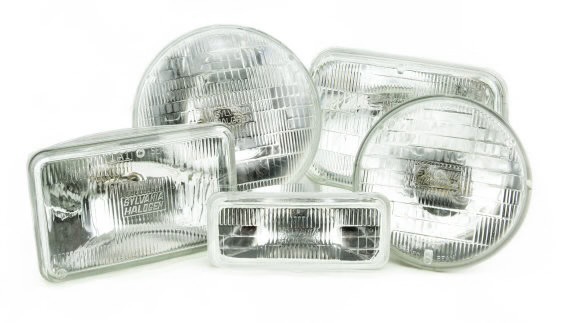- cross-posted to:
- technology@lemmy.world
- cross-posted to:
- technology@lemmy.world
Despite US dominance in so many different areas of technology, we’re sadly somewhat of a backwater when it comes to car headlamps. It’s been this way for many decades, a result of restrictive federal vehicle regulations that get updated rarely. The latest lights to try to work their way through red tape and onto the road are active-matrix LED lamps, which can shape their beams to avoid blinding oncoming drivers.
From the 1960s, Federal Motor Vehicle Safety Standards allowed for only sealed high- and low-beam headlamps, and as a result, automakers like Mercedes-Benz would sell cars with less capable lighting in North America than it offered to European customers.
A decade ago, this was still the case. In 2014, Audi tried unsuccessfully to bring its new laser high-beam technology to US roads. Developed in the racing crucible that is the 24 Hours of Le Mans, the laser lights illuminate much farther down the road than the high beams of the time, but in this case, the lighting tech had to satisfy both the National Highway Traffic Safety Administration and the Food and Drug Administration, which has regulatory oversight for any laser products.
The good news is that by 2019, laser high beams were finally an available option on US roads, albeit once the power got turned down to reduce their range.
NHTSA’s opposition to advanced lighting tech is not entirely misplaced. Obviously, being able to see far down the road at night is a good thing for a driver. On the other hand, being dazzled or blinded by the bright headlights of an approaching driver is categorically not a good thing. Nor is losing your night vision to the glare of a car (it’s always a pickup) behind you with too-bright lights that fill your mirrors.
This is where active-matrix LED high beams come in, which use clusters of controllable LED pixels. Think of it like a more advanced version of the “auto high beam” function found on many newer cars, which uses a car’s forward-looking sensors to know when to dim the lights and when to leave the high beams on.
Here, sensor data is used much more granularly. Instead of turning off the entire high beam, the car only turns off individual pixels, so the roadway is still illuminated, but a car a few hundred feet up the road won’t be.
Rather than design entirely new headlight clusters for the US, most OEMs’ solution was to offer the hardware here but disable the beam-shaping function—easy to do when it’s just software. But in 2022, NHTSA relented—nine years after Toyota first asked the regulator to reconsider its stance.
Your low beams were fine 20 years ago. Don’t create this expectation in drivers that they have to turn night into day. That only adds to the problem of asshole drivers prioritizing their ability to see over other people’s ability to see. Matrix headlights are unnecessary and create orders of magnitude more light pollution
Blinding headlights are due to poorly aligned low beams, too bright LED headlights, bigger cars with their headlights mounted higher and higher. So the solutions are: low beam alignment that can’t be made to blind you by the driver, regulation on luminosity and color spectrum of lights, stop financial incentives to make vehicles large, heavier, deadlier.
I bike at night often. Very few turn off their blinders for me. It’s so bad that I have to come to a full stop until the car passes. If you have ever turned off your blinders for bikers at night: Thank you, seriously. We appreciate it more than you know.
That’s the reason I think matrix lights should be outlawed. They allow plausible deniability for the driver. “oh sorry, is my matrix broken?” No, it never worked to begin with; bikes and pedestrians are blinded. Drivers on the opposite lane are blinded if there’s a divider between sensor and lamp. You’re illuminating the town like breaking dawn because your matrix doesn’t care about sleep, either!
The light I use on my bike is on that I attach to the handle bar for each use, so it’s not super duper fixed - just meaning I can adjust it on the fly if I need to.
I 100% angle it up and point it right back at cats driving with their high beams on. Almost every time they turn theirs off and I lower my light back down.
I suspect a lot of them now are the automatic high beams that cars absolutely should not have.
My problem is my state (MI) refuses to enact any kind of road worthy certification process. We have too many trucks and cars with illegal headlights and brake lights. I’ve seen green, blue, purple headlights (mostly modded jeeps) and taillights so tinted I couldn’t see them stopping during the day. And lifted trucks that never reposition their lights so you are blinded no matter what you drive.
We get laws that stop the new tech of active dimming but at the same time we have lazy chicken shit cops that just let these distracting things that are already illegal just slide on by. Might as well buy an import with the good lights or import the parts and install them yourself.
All you need is to have all car’s lights be horizontally polarized and then all windshields have a vertical polarizer there I’ve fixed the problem.
Now basically the light would come out and only vertical polarizer light or scattered light would be accepted by everyone’s windshields. If you’ve ever played with this setup on your own using a flashlight and polarizer shades, the color of almost all objects look so cool.
And pedestrians and cyclists?
So long as they are wearing polarized glasses they too can join in on the fun.
Was walking the dogs at five am when I realized the impracticality of this statement. You are suggesting people wear sunglasses at night so automobile drivers don’t have to slow down to a speed safe for the conditions. Just don’t overdrive your headlights so you can safely see and react to anything (cyclists, pedestrians, livestock, rhythm pigs, critters in the road)
Also retrofitting all front and back windshields of all existing vehicles on the road.
It’s practical. The polarizers don’t have to be sunshade just polarizing. There’s a little attenuation but it’s by no means a dark shade. Obviously you are tossing away half the light plus the light Absorbed by the glasses. It can be gradually phased in over the usual 13 years of full fleet replacement.
Half the light plus are functionally sunglasses and would be hazardous for a pedestrian to be wearing in the dark. The only time a pedestrian would be able to see is when a vehicle was illuminating the area.
You could be wearing a flashlight also with a polarizer on it? The street lights could also be made polarized.
I believe you’ve veered into possible but far from practical territory.
The ol’ DMG Gameboy tech.
Nah. The issue is way more complex than that and begins in proper training for drivers and ends in some proper road worthy inspections of vehicles so that they at least have their lights correctly aligned and aimed.
There are no such issues in Europe. Sure, you get the occasional double blink from matrix led system, but I’d take those systems any day of the week over some who just forgot to turn off their high beams or has their lights aimed incorrectly
It seems to me like we didn’t have this problem twenty years ago. If blinding LEDs are the problem, why not just not allow them anymore for headlights? It takes 5 seconds to pop in a new incandescent headlight on cars that have them, and well made ones can last 20+ years depending on the construction. Visibility is good and equivalent to some LEDs with higher end lamps, and it doesn’t create a superbly unnatural light that impairs the other drivers, pedestrians, or nature. It would also reduce light pollution.
On very rare occasion, the progressive step forward, actually looks a lot like the road backwards. It would take a long time to implement, but anything worth doing is worth taking the time to do it right.
Auto sensing technology is going to be more of a glaring headache in 20 years, when you have half of the cars with failing sensors and everyone getting blinded even worse. Adaptive Driving Beams (ADB) are not a solution, it does not properly address the issues of glare, and it will likely only make the problem worse by further removing human interaction from headlight controls.
That is quite a complex task. Being able to focus the beam in a certain direction is one thing. And it is the easier part.
But where should it focus to? You cannot just base the up/down position of the head and therefore the lamp as such, you also need to know where the wearer is looking left or right of the direction of travel. Just imagine you are sitting in a car and a guy with such a headlamp is coming in your direction. All this biker needs to do is just turn his head and look at you for some reason, and blam! You are staring right into a blazing array of LEDs.
Can anyone explain this part to me, like I’m five?
From the 1960s, Federal Motor Vehicle Safety Standards allowed for only sealed high- and low-beam headlamps, and as a result, automakers like Mercedes-Benz would sell cars with less capable lighting in North America than it offered to European customers.
Sealed beam headlights are the whole thing, lens, reflector, bulb all in one assembly. You don’t replace the bulb with these, you replace the entire light. Think old cars/trucks when everything had standardized round glass headlights. Not unique designs per model.
Because Mercedes Benz couldn’t use their fancy euro headlights for cars in the US, they had to use the standardized sealed beam lights, which were not as powerful.

I’d just go for a “feature” that disables the on/off function (leaving the momentary function alone) of the hi-beam when a sensor/s detects light above a certain luminosity. I also think an extra cost to the registration could be tacked on for vehicles that are lifted or otherwise have headlights above a certain height that would scale with the said height.
While my car was being repaired after a crash, the insurance company gave me a rental to use for the duration. The rental company only had a Land Rover Evoque (or something), and that car had the fancy led matrix lights. It was amazing! You could actually see the light being “shaped” on the road in front, going around incoming traffic, it was constantly moving. To me it was a bit distracting though…
More and more I am tempted to buy one of those 36,000 lumen flashlights and shine it at people who refuse to remove their high beams. You can tell when it’s just a tall truck and some asshole with high beams.
deleted by creator









